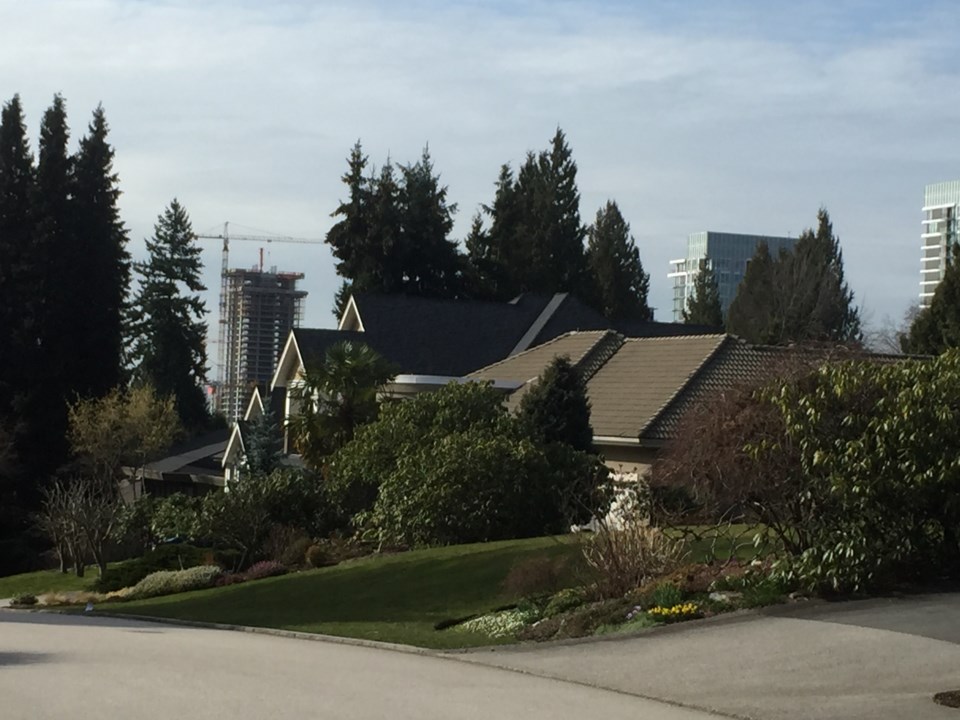Busy streets, 40-storey towers and older houses being torn down to make way for townhouses don’t tell the whole story about population growth in the Tri-Cities, which is slowing or declining, recent statistics show.
Every year, BC Stats releases total population estimates, and its calculation shows the Tri-Cities' population growth appears to be slowing.
Coquitlam — with its soaring skyscrapers next to transit stations — is growing faster than the other cities in the Tri-Cities, but at a moderate pace. There’s been a 6% population increase since 2015/’16 but the population grew just 1.4% in 2019/2020 over the previous year.
Port Coquitlam and Port Moody, meanwhile, are losing people, suggest statistics compiled by the BC government from Stats Canada numbers.
Up until recently, Port Coquitlam was growing at about 1% per year and is now at 63,508. But the last two years saw a drop of -0.1% and -1.0%.
Port Moody’s population also dropped -0.4% between 2018/’19 and 2019/’20 after two years of small population hikes. Still, it has only increased its population by 111 people to 35,151 from 35,040 since 2015, according to the statistics.
Surrey, meanwhile, across the Fraser River, is racing toward emerging as a regional megacity, with a population of 598.530 and 2.1% growth last year.
MORE PEOPLE OWN HOMES BUT DON'T LIVE IN THEM
The slower pace of growth in the Tri-Cities hides some surprising trends, according to Andy Yan, director of the City Program at Simon Fraser University.
Yan says the Tri-Cities is in transition, with many developments in discussion or under construction. Some towers may even appear to be fully finished, but aren’t and are awaiting occupation.
The fact that they appear built but are still empty can affect the population numbers, he said.
“Really, when did these towers come online? Are they online? Are they still being built? Sometimes what looks like a building and looks like it's coming online may still be a year or two away and that could have a downward trend on the numbers,” he said.
He points to the high percentage of apartments that are not owner-occupied as a statistic that could help to explain the Tri-Cities’ apparent slow, and even stagnant, population growth.
According to his analysis of federal statistics from 2019, 36% of Coquitlam condos are not owner-occupied, compared to 23% in Port Coquitlam, 31% in Port Moody and a Metro Vancouver average of 37%.
“In Coquitlam, we’re talking about one-third being not owner-occupied; They’re not occupied by the actual owners and could be rented, could be rented out to somebody else. It could be empty, it’s a pattern,” he said.
His comment is backed by recent speculation tax numbers that showed 217 property owners had to pay the tax in Coquitlam because they weren’t exempt, followed by Port Coquitlam at 44 and 35 in Port Moody.
The Tri-Cities may appear to have slower growth than Surrey for example, but they will continue to draw families looking for more space, according to Yan, because they provide room for children and even multi-generational families looking to share costs and care-giving duties, with COVID-19 possibly accelerating the trend.
He speculates that older generations who purchased their homes in Coquitlam, Port Coquitlam and Port Moody 40 and 50 years ago are downsizing or moving out; at the same time, it takes a long time for large land assemblies and blocks of older homes to go from the planning stage to development.
TRI-CITIES STILL WELCOMING FOR FAMILIES BUT AFFORDABILITY A CONCERN
Meanwhile, the older millennials are turning 40 years old and are in the home-buying stage because they are having children.
“It’s going to be incremental,” he said, noting that developers need millions of dollars to be able to buy up properties, sometimes a tall order. When they do propose a development, it takes time to bring the project to fruition.
“Change occurs slowly,” Yan said.
Finally, he says the Tri-Cities also benefits from having larger than average-sized condos which will also draw people to the communities, especially since COVID-19 has made working from home more common and people are appreciating their private space.
He cautioned that it doesn’t make sense to look at one year of data to draw conclusions because it takes time for demographic change to transform neighbourhoods, and while towers seem to draw the eye, a growing number of people will prefer ground-oriented housing where they can raise a family and have a little patch of green, perhaps close to a park.
(The median total living area in a condo in Port Moody, for example, is 920 square feet, compared to 854 for Metro Vancouver, according to statistics compiled by Yan from Statistics Canada numbers.)
The most important statistic, said Yan, is housing affordability, noting the importance of keeping speculation in check so people aren’t priced out of the Tri-Cities.





